上一篇主要说了5种注入JS脚本的方式和常用的功能,这一篇说一下不同注入方式之间的通信以及一些有用的小技巧。
通信
上一篇说的5种JS之间的通信方法,可以用一张图来表示。
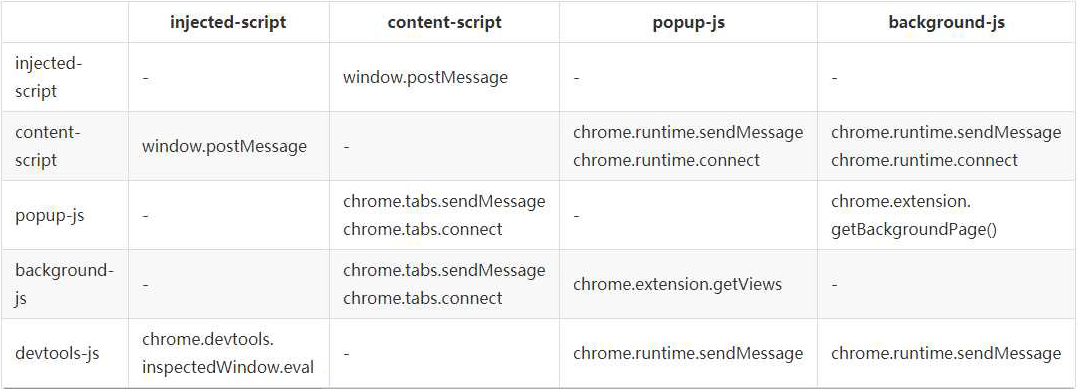
其中,popup和background其实几乎可以视为一种东西,因为它们可访问的API都一样、通信机制一样、都可以跨域。
popup和background
popup可以直接调用background中的JS方法,也可以直接访问background的DOM:
// background.js function test() { alert('我是background!'); } // popup.js var bg = chrome.extension.getBackgroundPage(); bg.test(); // 访问bg的函数 alert(bg.document.body.innerHTML); // 访问bg的DOM
至于background访问popup如下(前提是popup已经打开):
var views = chrome.extension.getViews({type:'popup'}); if(views.length > 0) { console.log(views[0].location.href); }
popup或者bg向content主动发送消息
background.js或者popup.js:
function sendMessageToContentScript(message, callback) { chrome.tabs.query({active: true, currentWindow: true}, function(tabs) { chrome.tabs.sendMessage(tabs[0].id, message, function(response) { if(callback) callback(response); }); }); } sendMessageToContentScript({cmd:'test', value:'你好,我是popup!'}, function(response) { console.log('来自content的回复:'+response); });
content-script.js接收:
chrome.runtime.onMessage.addListener(function(request, sender, sendResponse) { // console.log(sender.tab ?"from a content script:" + sender.tab.url :"from the extension"); if(request.cmd == 'test') alert(request.value); sendResponse('我收到了你的消息!'); });
双方通信可以直接发送JSON对象,所以无需解析,很方便(当然也可以直接发送字符串)。
content-script主动发消息给后台
content-script.js:
chrome.runtime.sendMessage({greeting: '你好,我是content-script呀,我主动发消息给后台!'}, function(response) { console.log('收到来自后台的回复:' + response); });
background.js 或者 popup.js:
// 监听来自content-script的消息 chrome.runtime.onMessage.addListener(function(request, sender, sendResponse) { console.log('收到来自content-script的消息:'); console.log(request, sender, sendResponse); sendResponse('我是后台,我已收到你的消息:' + JSON.stringify(request)); });
注意事项:
- content_scripts向popup主动发消息的前提是popup必须打开!否则需要利用background作中转;
- 如果background和popup同时监听,那么它们都可以同时收到消息,但是只有一个可以sendResponse,一个先发送了,那么另外一个再发送就无效;
injected script和content-script
content-script和页面内的脚本(injected-script自然也属于页面内的脚本)之间唯一共享的东西就是页面的DOM元素,有2种方法可以实现二者通讯:
- 可以通过window.postMessage和window.addEventListener来实现二者消息通讯;
- 通过自定义DOM事件来实现;
第一种方法(推荐):
injected-script中:
window.postMessage({"test": '你好!'}, '*');
content script中:
window.addEventListener("message", function(e) { console.log(e.data); }, false);
第二种方法:
injected-script中:
var customEvent = document.createEvent('Event'); customEvent.initEvent('myCustomEvent', true, true); function fireCustomEvent(data) { hiddenDiv = document.getElementById('myCustomEventDiv'); hiddenDiv.innerText = data hiddenDiv.dispatchEvent(customEvent); } fireCustomEvent('你好,我是普通JS!');
content-script.js中:
var hiddenDiv = document.getElementById('myCustomEventDiv'); if(!hiddenDiv) { hiddenDiv = document.createElement('div'); hiddenDiv.style.display = 'none'; document.body.appendChild(hiddenDiv); } hiddenDiv.addEventListener('myCustomEvent', function() { var eventData = document.getElementById('myCustomEventDiv').innerText; console.log('收到自定义事件消息:' + eventData); });
injected-script与popup通信
injected-script无法直接和popup通信,必须借助content-script作为中间人。
长连接和短连接
Chrome插件中有2种通信方式,一个是短连接(chrome.tabs.sendMessage和chrome.runtime.sendMessage),一个是长连接(chrome.tabs.connect和chrome.runtime.connect)。
短连接的话就是挤牙膏一样,我发送一下,你收到了再回复一下,如果对方不回复,你只能重新发,而长连接类似WebSocket会一直建立连接,双方可以随时互发消息。
短连接上面已经有代码示例了,这里只讲一下长连接。
popup.js:
getCurrentTabId((tabId) => { var port = chrome.tabs.connect(tabId, {name: 'test-connect'}); port.postMessage({question: '你是谁啊?'}); port.onMessage.addListener(function(msg) { alert('收到消息:'+msg.answer); if(msg.answer && msg.answer.startsWith('我是')) { port.postMessage({question: '哦,原来是你啊!'}); } }); });
content-script.js:
// 监听长连接 chrome.runtime.onConnect.addListener(function(port) { console.log(port); if(port.name == 'test-connect') { port.onMessage.addListener(function(msg) { console.log('收到长连接消息:', msg); if(msg.question == '你是谁啊?') port.postMessage({answer: '我是你爸!'}); }); } });
动态注入或执行JS
虽然在background和popup中无法直接访问页面DOM,但是可以通过chrome.tabs.executeScript来执行脚本,从而实现访问web页面的DOM(注意,这种方式也不能直接访问页面JS)。
示例manifest.json配置:
{ "name": "动态JS注入演示", ... "permissions": [ "tabs", "http://*/*", "https://*/*" ], ... }
JS:
// 动态执行JS代码 chrome.tabs.executeScript(tabId, {code: 'document.body.style.backgroundColor="red"'}); // 动态执行JS文件 chrome.tabs.executeScript(tabId, {file: 'some-script.js'});
动态注入CSS
示例manifest.json配置:
{ "name": "动态CSS注入演示", ... "permissions": [ "tabs", "http://*/*", "https://*/*" ], ... }
JS代码:
// 动态执行CSS代码,TODO,这里有待验证 chrome.tabs.insertCSS(tabId, {code: 'xxx'}); // 动态执行CSS文件 chrome.tabs.insertCSS(tabId, {file: 'some-style.css'});
获取当前窗口ID
chrome.windows.getCurrent(function(currentWindow) { console.log('当前窗口ID:' + currentWindow.id); });
获取当前标签页ID
一般有2种方法:
// 获取当前选项卡ID function getCurrentTabId(callback) { chrome.tabs.query({active: true, currentWindow: true}, function(tabs) { if(callback) callback(tabs.length ? tabs[0].id: null); }); }
获取当前选项卡id的另一种方法,大部分时候都类似,只有少部分时候会不一样(例如当窗口最小化时)
// 获取当前选项卡ID function getCurrentTabId2() { chrome.windows.getCurrent(function(currentWindow) { chrome.tabs.query({active: true, windowId: currentWindow.id}, function(tabs) { if(callback) callback(tabs.length ? tabs[0].id: null); }); }); }
本地存储
本地存储建议用chrome.storage而不是普通的localStorage,区别有好几点,个人认为最重要的2点区别是:
- chrome.storage是针对插件全局的,即使你在background中保存的数据,在content-script也能获取到;
- chrome.storage.sync可以跟随当前登录用户自动同步,这台电脑修改的设置会自动同步到其它电脑,很方便,如果没有登录或者未联网则先保存到本地,等登录了再同步至网络;
需要声明storage权限,有chrome.storage.sync和chrome.storage.local2种方式可供选择,使用示例如下:
// 读取数据,第一个参数是指定要读取的key以及设置默认值 chrome.storage.sync.get({color: 'red', age: 18}, function(items) { console.log(items.color, items.age); }); // 保存数据 chrome.storage.sync.set({color: 'blue'}, function() { console.log('保存成功!'); });
webRequest
通过webRequest系列API可以对HTTP请求进行任性地修改、定制,下面是webRequest的几个生命周期:
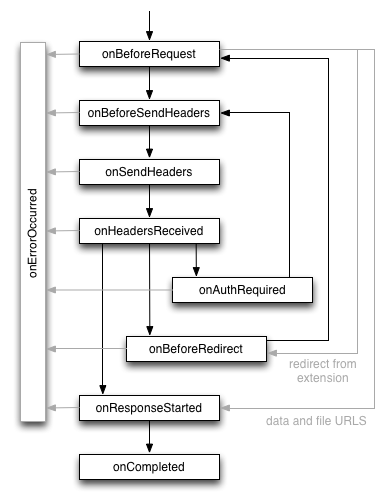
这里通过beforeRequest来简单演示一下它的冰山一角:
//manifest.json { // 权限申请 "permissions": [ "webRequest", // web请求 "webRequestBlocking", // 阻塞式web请求 "storage", // 插件本地存储 "http://*/*", // 可以通过executeScript或者insertCSS访问的网站 "https://*/*" // 可以通过executeScript或者insertCSS访问的网站 ], } // background.js // 是否显示图片 var showImage; chrome.storage.sync.get({showImage: true}, function(items) { showImage = items.showImage; }); // web请求监听,最后一个参数表示阻塞式,需单独声明权限:webRequestBlocking chrome.webRequest.onBeforeRequest.addListener(details => { // cancel 表示取消本次请求 if(!showImage && details.type == 'image') return {cancel: true}; // 简单的音视频检测 // 大部分网站视频的type并不是media,且视频做了防下载处理,所以这里仅仅是为了演示效果,无实际意义 if(details.type == 'media') { chrome.notifications.create(null, { type: 'basic', iconUrl: 'img/icon.png', title: '检测到音视频', message: '音视频地址:' + details.url, }); } }, {urls: ["<all_urls>"]}, ["blocking"]);
几个可能经常用到的事件使用示例:
// 每次请求前触发,可以拿到 requestBody 数据,同时可以对本次请求作出干预修改 chrome.webRequest.onBeforeRequest.addListener(details => { console.log('onBeforeRequest', details); }, {urls: ['<all_urls>']}, ['blocking', 'extraHeaders', 'requestBody']); // 发送header之前触发,可以拿到请求headers,也可以添加、修改、删除headers // 但使用有一定限制,一些特殊头部可能拿不到或者存在特殊情况,详见官网文档 chrome.webRequest.onBeforeSendHeaders.addListener(details => { console.log('onBeforeSendHeaders', details); }, {urls: ['<all_urls>']}, ['blocking', 'extraHeaders', 'requestHeaders']); // 开始响应触发,可以拿到服务端返回的headers chrome.webRequest.onResponseStarted.addListener(details => { console.log('onResponseStarted', details); }, {urls: ['<all_urls>']}, ['extraHeaders', 'responseHeaders']); // 请求完成触发,能拿到的数据和onResponseStarted一样,注意无法拿到responseBody chrome.webRequest.onCompleted.addListener(details => { console.log('onCompleted', details); }, {urls: ['<all_urls>']}, ['extraHeaders', 'responseHeaders']);
上面示例中提到,使用webRequestAPI是无法拿到responseBody的,想要拿到的话只能采取一些变通方法,例如:
- 重写XmlHttpRequest和fetch,增加自定义拦截事件,缺点是实现方式可能有点脏,重写不好的话可能影响正常页面;
- devtools的chrome.devtools.network.onRequestFinishedAPI可以拿到返回的body,缺点是必须打开开发者面板;
- 使用chrome.debugger.sendCommand发送Network.getResponseBody命令来获取body内容,缺点也很明显,会有一个恼人的提示:
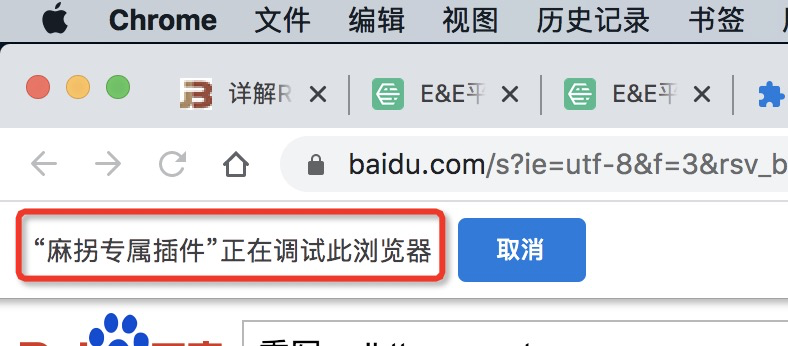
上述几种方法的实现方式可以参考这里。
国际化
插件根目录新建一个名为_locales的文件夹,再在下面新建一些语言的文件夹,如en、zh_CN、zh_TW,然后再在每个文件夹放入一个messages.json,同时必须在清单文件中设置default_locale。
_locales\en\messages.json内容:
{ "pluginDesc": {"message": "A simple chrome extension demo"}, "helloWorld": {"message": "Hello World!"} }
_locales\zh_CN\messages.json内容:
{ "pluginDesc": {"message": "一个简单的Chrome插件demo"}, "helloWorld": {"message": "你好啊,世界!"} }
在manifest.json和CSS文件中通过__MSG_messagename__引入,如:
{ "description": "__MSG_pluginDesc__", // 默认语言 "default_locale": "zh_CN", }
JS中则直接chrome.i18n.getMessage(“helloWorld”)。
测试时,通过给chrome建立一个不同的快捷方式chrome.exe –lang=en来切换语言,如:
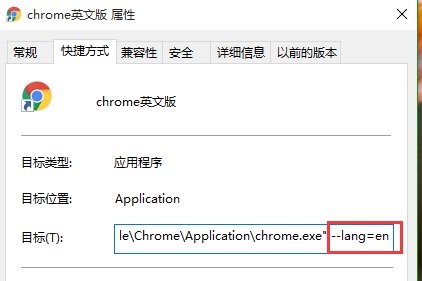
常见API总结
比较常用用的一些API系列:
- chrome.tabs
- chrome.webRequest
- chrome.window
- chrome.storage
- chrome.contextMenus
- chrome.devtools
- chrome.extension
chrome.cookies
获取某个网站的所有cookie:
const url = 'https://www.baidu.com'; chrome.cookies.getAll({url}, cookies => { console.log(cookies); });
清除某个网站的某个cookie:
const url = 'https://www.baidu.com'; const cookieName = 'userName'; chrome.cookies.remove({url, name: cookieName}, details => {});
chrome.runtime
- chrome.runtime.id:获取插件id
- chrome.runtime.getURL(‘xxx.html’):获取xxx.html在插件中的地址
经验总结
查看已安装插件路径
WIndows本地已安装的插件源码路径:C:\Users\用户名\AppData\Local\Google\Chrome\User Data\Default\Extensions,每一个插件被放在以插件ID为名的文件夹里面。
Mac系统本地已安装的插件源码路径:/Users/用户名/Library/Application Support/Google/Chrome/Default/Extensions 文件夹
如何查看某个插件的ID?进入 chrome://extensions ,然后勾选开发者模式即可看到了。
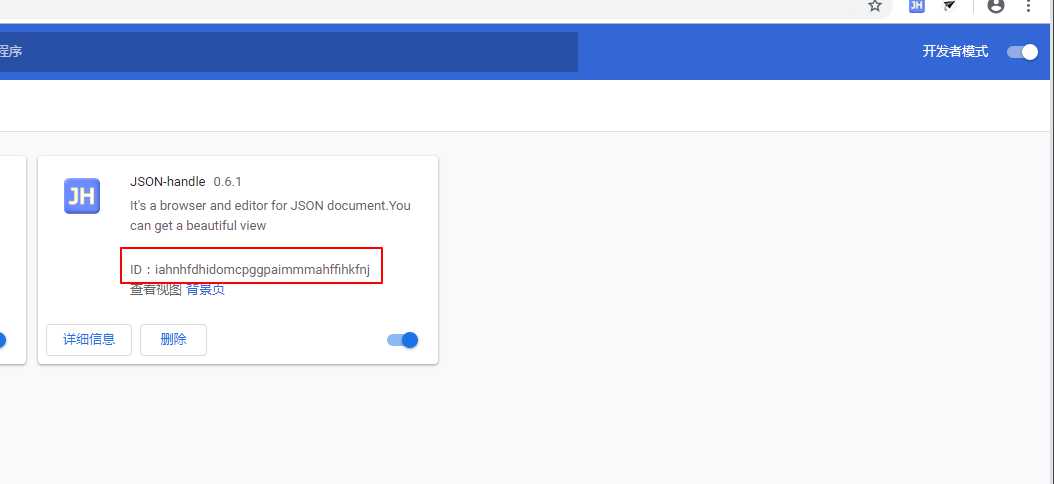
注意background的报错
很多时候发现自己写的代码会莫名其妙的失效,找来找去又找不到原因,这时打开background的控制台才发现原来某个地方写错了导致代码没生效,正是由于background报错的隐蔽性(需要主动打开对应的控制台才能看到错误),所以特别注意这点。
如何让popup页面不关闭
在对popup页面审查元素的时候popup会被强制打开无法关闭,只有控制台关闭了才可以关闭popup,原因很简单:如果popup关闭了控制台就没用了。这种方法在某些情况下很实用!
不支持内联JavaScript的执行
也就是不支持将js直接写在html中,比如:
<input id="btn" type="button" value="收藏" onclick="test()"/>
报错如下:
Refused to execute inline event handler because it violates the following Content Security Policy directive: "script-src 'self' blob: filesystem: chrome-extension-resource:". Either the 'unsafe-inline' keyword, a hash ('sha256-...'), or a nonce ('nonce-...') is required to enable inline execution.
解决方法就是用JS绑定事件:
$('#btn').on('click', function(){alert('测试')});
另外,对于A标签,这样写href=”javascript:;”然后用JS绑定事件虽然控制台会报错,但是不受影响,当然强迫症患者受不了的话只能写成href=”#”了。
如果这样写:
<a href="javascript:;" id="get_secret">请求secret</a>
报错如下:
Refused to execute JavaScript URL because it violates the following Content Security Policy directive: "script-src 'self' blob: filesystem: chrome-extension-resource:". Either the 'unsafe-inline' keyword, a hash ('sha256-...'), or a nonce ('nonce-...') is required to enable inline execution.
注入CSS的时候必须小心
由于通过content_scripts注入的CSS优先级非常高,几乎仅次于浏览器默认样式,稍不注意可能就会影响一些网站的展示效果,所以尽量不要写一些影响全局的样式。
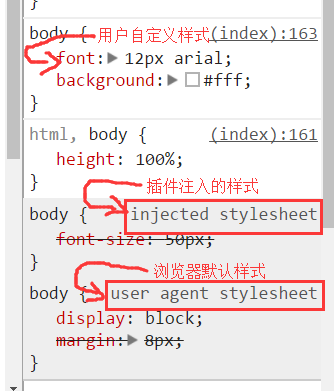
官方文档资料
从来如此,便对吗?
《狂人日记》——鲁迅
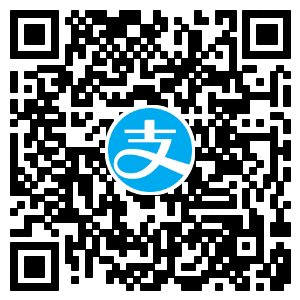





评论
394799 620859There is noticeably plenty of dollars to comprehend this. I suppose you created specific nice points in functions also. 828099
731098 956997hello I was very impressed with the setup you used with this site. I use blogs my self so very good job. definatly adding to bookmarks. 294409
897033 451470Sorry for the huge review, but Im actually loving the new Zune, and hope this, as well as the excellent reviews some other individuals have written, will help you decide if it is the correct choice for you. 201648
321898 339343hi, your website is wonderful. I truly do many thanks for operate 995541
47603 603986I gotta favorite this web internet site it seems quite beneficial . 285849
615765 646788Thanks for the write up! Also, just a heads up, your RSS feeds arent working. Could you take a appear at that? 918034
400927 72603This is the sort of data Ive long been in search of. Thanks for posting this data. 833120